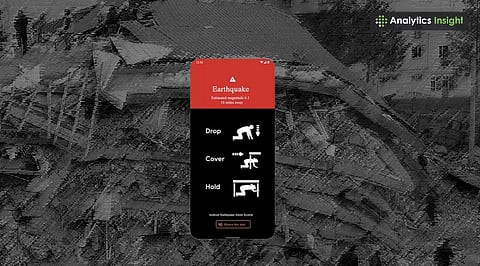

In the early hours of February 6, 2023, two earthquakes hit southeastern Turkey, killing nearly 55,000 and injuring over 100,000. Although the Android Earthquake Alerts (AEA) system from Google was live, only a small percentage of the people in the impact zone received a relevant warning. The Google Earthquake Alert failure during the 2023 Turkey earthquake has sparked global concern about early warning systems.
The AEA system utilizes data from Android smartphones to detect seismic activity. The AEA system detects seismic activity and can issue notifications in seconds, allowing people to seek cover just seconds before strong tremors hit. However, the system failed to recognize the severity of the initial 7.8 magnitude quake, incorrectly estimating it at just 4.5-4.9 on the moment magnitude scale.
As a result of the underestimation, only 469 ‘Take Action’ alerts, the system’s most urgent notification, were sent. This warning is designed to override phone settings and wake users during emergencies. During the devastating 2023 Turkey earthquake, many users reported not receiving alerts despite having Google's system enabled.
The Google Seismic Warning System, designed to provide life-saving seconds of warning, failed to activate for many in Turkey. Meanwhile, around 500,000 people received a much less urgent ‘Be Aware’ alert, which doesn’t override silent or Do Not Disturb modes and is meant for milder shaking.
Considering that nearly 10 million people lived within a 98-mile radius of the epicenter, experts and the public have criticized the vast shortfall in urgent alerts. The failure was especially alarming, as the quake struck at 4:17 a.m. when most people were asleep.
Following months of silence, Google later admitted in a Science journal study that the system had limitations in its detection algorithms. After analyzing the event and updating the software, Google re-ran a simulation of the quake.
This time, the improved system generated 10 million ‘Take Action’ alerts and 67 million ‘Be Aware’ notifications, dramatically different from what happened in real time.
The second major quake later that day performed slightly better, with over 8,000 ‘Take Action’ alerts issued. Yet the system’s failures in the first event remain a point of concern for many observers.
Also Read: How AI Helps in Earthquake Prediction?
Seismologists and disaster response experts have voiced concern that Google's system was not only underperforming but also that the company took too long to acknowledge its flaws. Some fear governments may overly rely on tech solutions like AEA while neglecting their own public alert systems.
“It’s not just about tech, it’s about lives,” said Elizabeth Reddy, a professor at the Colorado School of Mines, adding, “People died, and the system didn’t work the way it should have.”
Google says the AEA system is intended to support, not replace, national early warning efforts. It has since expanded the service to 98 countries and continues to refine its algorithms based on lessons from each earthquake.
Still, the 2023 Turkey earthquake has become a stark reminder of the limits of automated disaster technology and the urgent need for accountability, speed, and accuracy when lives are at stake.
